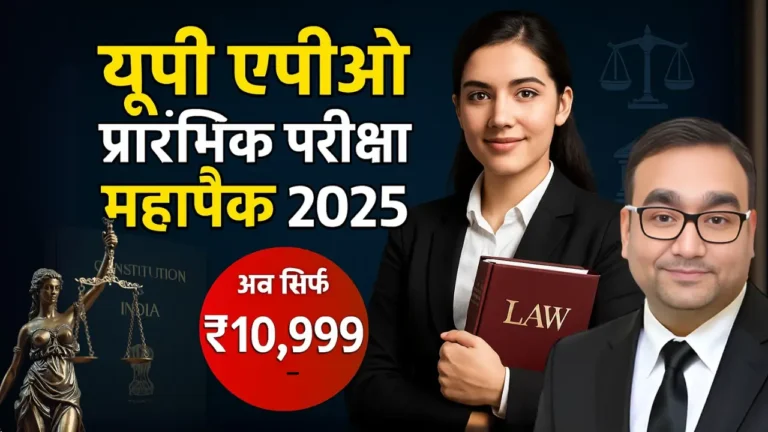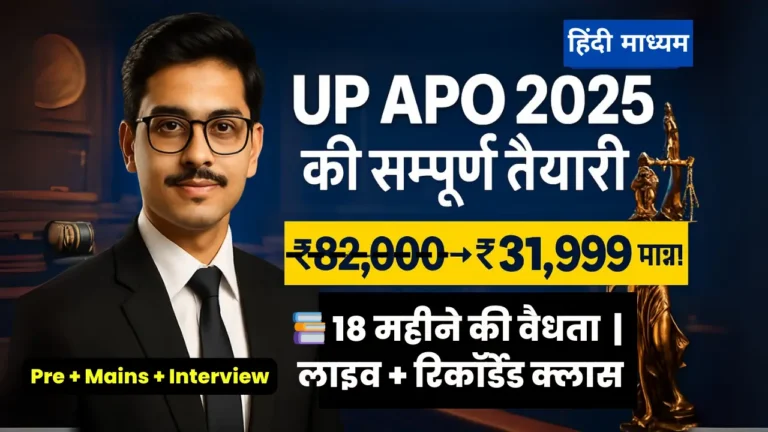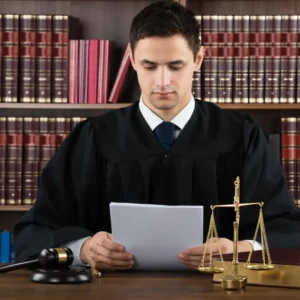The Debate on Climate Change Litigation: Can Courts Save the Planet Today is intensifying in 2025, as courts worldwide grapple with climate lawsuits against governments and corporations. From landmark rulings to enforcement challenges, this blog explores the role of climate litigation, recent trends, and its potential to drive environmental change, offering insights for legal aspirants.
Table of Contents
Introduction
The Debate on Climate Change Litigation: Can Courts Save the Planet Today has become a critical discourse in 2025, as the world faces escalating climate crises—rising temperatures, extreme weather events, and biodiversity loss.
Climate change litigation, where individuals, NGOs, and governments sue corporations or states to enforce climate action, has surged globally, with courts increasingly seen as a battleground for environmental justice. In India, the National Green Tribunal (NGT) and higher judiciary have played a pivotal role, while landmark cases like Urgenda v. Netherlands (2019) and Milieudefensie v. Shell (2021) have set global precedents. However, the debate persists: can courts, with their legal tools, truly save the planet, or are they limited by enforcement challenges, political resistance, and systemic barriers?
As of March 22, 2025, this blog examines the evolution of climate change litigation, its impact, recent trends, challenges, and its significance for legal aspirants preparing for Judiciary, APO, and JLO exams, offering a comprehensive analysis of whether courts can indeed be the planet’s saviors.
1. Understanding Climate Change Litigation
Climate change litigation refers to legal actions brought before courts to address climate-related issues, seeking to hold governments, corporations, or individuals accountable for their contributions to climate change or failure to mitigate its impacts.
- Definition: Climate litigation encompasses lawsuits that aim to enforce climate policies, seek compensation for climate damages, or compel action to reduce greenhouse gas (GHG) emissions. Cases typically involve violations of environmental laws, human rights, or constitutional rights, such as the right to a healthy environment under Article 21 in India.
- Types of Litigation:
- Against Governments: Lawsuits challenging inadequate climate policies or failure to meet emission targets, e.g., Urgenda v. Netherlands (2019).
- Against Corporations: Actions targeting fossil fuel companies for their role in climate change, e.g., Milieudefensie v. Shell (2021).
- Rights-Based Claims: Cases asserting that climate inaction violates fundamental rights, such as the right to life or a clean environment.
- Global Context: According to the Grantham Research Institute, global climate litigation cases doubled from 2015 to 2023, reaching over 2,500 cases by 2023, with 70% filed after 2015. In India, the NGT has been a key forum, handling cases on air pollution, deforestation, and waste management.
The Debate on Climate Change Litigation: Can Courts Save the Planet Today centers on whether judicial interventions can drive systemic change or if they are merely symbolic in the face of a global crisis.
2. Historical Context of Climate Change Litigation
Climate change litigation has evolved from a niche legal strategy to a mainstream tool for environmental advocacy, reflecting growing awareness of climate impacts.
- Early Cases (1990s-2000s): Early climate litigation focused on regulatory enforcement, such as Massachusetts v. EPA (2007) in the U.S., where the Supreme Court ruled that the Environmental Protection Agency (EPA) must regulate GHG emissions under the Clean Air Act, marking a turning point in climate accountability.
- Rise of Rights-Based Litigation (2010s): The 2010s saw a surge in rights-based claims, with cases like Urgenda v. Netherlands (2019), where the Dutch Supreme Court ordered the government to reduce emissions by 25% by 2020, citing human rights obligations under the European Convention on Human Rights.
- Corporate Accountability (2020s): The 2021 Milieudefensie v. Shell ruling in the Netherlands mandated Shell to cut emissions by 45% by 2030, setting a precedent for corporate liability. In India, the NGT’s 2017 penalty on the Art of Living Festival for environmental damage on the Yamuna floodplain highlighted early corporate accountability efforts.
- India’s Journey: India’s climate litigation has been shaped by the NGT, established in 2010, and the judiciary’s recognition of the right to a healthy environment under Article 21. Landmark cases like M.C. Mehta v. Union of India (1986) laid the groundwork, with the Supreme Court advocating for specialized environmental courts, leading to the NGT’s formation.
This historical trajectory underscores the Debate on Climate Change Litigation: Can Courts Save the Planet Today, as courts have increasingly become forums for climate action, but their effectiveness remains contested.
3. The Role of Courts in Climate Change Litigation
Courts play a multifaceted role in climate change litigation, acting as enforcers, policymakers, and advocates for environmental justice. Below are their key contributions:
Enforcing Climate Obligations
- Impact: Courts enforce national and international climate commitments, such as those under the Paris Agreement (2015). In Urgenda v. Netherlands, the court held the Dutch government accountable for failing to meet its climate targets, setting a precedent for judicial enforcement.
- India Context: The NGT has enforced compliance with environmental laws, such as the Environment Protection Act, 1986. In 2022, it imposed a Rs. 3500 crore fine on West Bengal for failing to manage solid and liquid waste, reflecting the polluter pays principle.
Protecting Human Rights
- Impact: Courts recognize climate change as a human rights issue, linking it to the right to life, health, and a clean environment. In Leghari v. Federation of Pakistan (2015), the Lahore High Court ruled that the government’s failure to address climate change violated citizens’ fundamental rights, ordering the creation of a Climate Change Commission.
- India Context: In India, the Supreme Court and NGT have interpreted Article 21 to include the right to a healthy environment. In 2024, the NGT directed the Uttar Pradesh government to address water pollution by tanneries in Jajmau, Kanpur, protecting community rights to clean water.
Holding Corporations Accountable
- Impact: Courts are increasingly targeting corporations, particularly fossil fuel companies, for their role in climate change. The Milieudefensie v. Shell ruling mandated emission reductions, signaling a shift toward corporate liability.
- India Context: While India has fewer corporate climate lawsuits, the NGT has taken action against industries. In 2024, it imposed penalties on a thermal power plant in Maharashtra for violating emission norms, as reported in a compliance filing.
Shaping Policy and Public Discourse
- Impact: Climate litigation influences policy by pressuring governments to strengthen climate laws and regulations. The Massachusetts v. EPA ruling led to stricter U.S. emission standards, while Urgenda inspired similar lawsuits in Belgium, France, and Germany.
- India Context: The NGT’s 2021 critique of Ganga cleaning efforts prompted greater accountability in fund utilization, influencing national water management policies.
The Debate on Climate Change Litigation: Can Courts Save the Planet Today hinges on these roles, with courts acting as catalysts for change, but their ability to deliver systemic solutions remains under scrutiny.
4. Recent Trends in Climate Change Litigation in 2025
As of March 22, 2025, the Debate on Climate Change Litigation: Can Courts Save the Planet Today is shaped by several emerging trends:
- Rise in Youth-Led Litigation: Young activists are driving climate lawsuits, inspired by cases like Juliana v. United States (2015). In 2024, a group of Indian youth filed a petition in the Supreme Court, seeking stronger climate policies, arguing that the government’s inaction violates their right to a future under Article 21, though the case is ongoing.
- Corporate Accountability Surge: Following Milieudefensie v. Shell, more lawsuits target corporations. In 2025, a Dutch court ordered another oil company, TotalEnergies, to align with Paris Agreement goals, while in India, the NGT fined a cement company in Rajasthan for illegal mining affecting local ecosystems, as per a January 2025 order.
- Suo Motu Actions by Courts: Courts are taking proactive steps. The NGT’s 2024 suo motu action on Delhi air pollution, based on media reports, directed stricter emission controls, reflecting its expanded role post the 2021 Municipal Corporation of Bombay v. Ankita Sinha ruling.
- Digital Integration: Courts are leveraging technology for climate litigation. The NGT has adopted virtual hearings, with a 2025 Law Ministry report noting a 12% increase in case disposals at its principal bench due to digitalization, though zonal benches face connectivity issues.
- Focus on Climate Adaptation: Litigation is shifting toward adaptation measures, such as infrastructure resilience. In 2025, the NGT ordered the Tamil Nadu government to implement flood-resistant urban planning in Chennai, following a PIL on recurring floods linked to climate change.
- Sentiment on X: Posts on X in 2025 reflect mixed views. Some users praise climate litigation for holding polluters accountable, citing the NGT’s actions, while others argue that judicial interventions are too slow to address the climate crisis, pointing to enforcement delays, though these sentiments remain inconclusive.
These trends highlight the evolving nature of the Debate on Climate Change Litigation: Can Courts Save the Planet Today, as courts adapt to new challenges while facing systemic limitations.
5. Challenges in Climate Change Litigation
Despite its potential, the Debate on Climate Change Litigation: Can Courts Save the Planet Today reveals several challenges that limit the judiciary’s impact:
- Causation and Attribution: Proving a direct link between a defendant’s actions (e.g., emissions) and specific climate impacts is complex. Scientific attribution studies are often contested, as seen in Lliuya v. RWE (2015), where a Peruvian farmer sued a German energy company for glacial melting, but the case faced evidentiary hurdles.
- Enforcement Gaps: Many court orders remain unenforced due to political resistance or lack of mechanisms. In India, the NGT’s orders on Ganga pollution and Delhi air quality have seen limited compliance, with a 2025 report noting that 60% of its directives on air pollution remain unimplemented.
- Judicial Overreach Concerns: Governments and corporations often argue that climate policy is a legislative or executive domain, not a judicial one. In 2025, the Supreme Court cautioned the NGT against overstepping its mandate in suo motu cases, following industry complaints, as reported in a Mint article.
- Resource Constraints: Courts, especially the NGT, face resource shortages. As of 2019, the NGT operated with only 4 judicial and 2 expert members against a mandated minimum of 10 each, leading to delays and reliance on video conferencing, which lawyers find inadequate.
- Global Disparities: Climate litigation is more prevalent in developed nations, with 70% of cases filed in the U.S., per the Grantham Research Institute. In developing countries like India, limited legal awareness and access to justice hinder the growth of climate lawsuits, particularly for marginalized communities.
These challenges fuel the Debate on Climate Change Litigation: Can Courts Save the Planet Today, questioning whether courts can deliver the systemic change needed to combat climate change.
6. Can Courts Save the Planet? Arguments For and Against
The Debate on Climate Change Litigation: Can Courts Save the Planet Today involves compelling arguments on both sides:
Arguments in Favor
- Driving Accountability: Courts hold governments and corporations accountable, as seen in Urgenda and Milieudefensie v. Shell, forcing them to align with climate goals and setting legal precedents for future action.
- Protecting Rights: By linking climate change to human rights, courts ensure that vulnerable communities are protected, as in Leghari v. Pakistan and the NGT’s 2024 Jajmau tanneries case, promoting environmental justice.
- Influencing Policy: Judicial rulings pressure governments to strengthen climate policies. The NGT’s 2021 Ganga cleaning critique led to better fund oversight, while Massachusetts v. EPA spurred U.S. emission regulations.
- Raising Awareness: Climate litigation educates the public and policymakers, amplifying the urgency of climate action, as seen in youth-led cases like Juliana v. United States.
Arguments Against
- Limited Enforcement Power: Courts lack the mechanisms to enforce their rulings, as seen in the NGT’s unimplemented orders on air pollution and Ganga cleaning, rendering decisions symbolic rather than transformative.
- Systemic Complexity: Climate change requires coordinated global action, which courts cannot mandate. Judicial interventions are often localized, unable to address the scale of the crisis, as noted in posts on X.
- Political Resistance: Governments and corporations often resist court orders, citing economic priorities. In 2025, the Indian government challenged an NGT order on coal plant emissions, arguing it would impact energy security, delaying compliance.
- Judicial Constraints: Courts are not policymakers and cannot address root causes like global trade or energy systems. The Supreme Court’s 2025 caution to the NGT against overreach reflects this limitation.
The Debate on Climate Change Litigation: Can Courts Save the Planet Today thus reveals a paradox: courts can catalyze change, but they cannot single-handedly save the planet without broader systemic support.
7. Recommendations for Strengthening Climate Litigation
To enhance the role of courts in the Debate on Climate Change Litigation: Can Courts Save the Planet Today, the following measures are recommended:
- Strengthen Enforcement Mechanisms: Establish dedicated bodies to enforce court orders, such as an NGT enforcement wing, ensuring compliance with rulings on pollution and waste management.
- Enhance Scientific Evidence: Invest in climate attribution science to strengthen causation arguments in court, making it easier to link defendants’ actions to climate impacts, as needed in cases like Lliuya v. RWE.
- Expand NGT Resources: Increase the NGT’s judicial and expert members to the mandated minimum of 10 each, and provide adequate funding to operationalize zonal benches, reducing delays and improving access to justice.
- Raise Legal Awareness: Launch campaigns to educate communities, especially in rural India, about climate litigation, empowering them to file cases and seek redressal through the NGT or higher courts.
- Encourage Global Cooperation: Courts should collaborate with international bodies like the UNEP to harmonize climate litigation strategies, ensuring that rulings in one jurisdiction inspire action globally, building on cases like Urgenda.
These recommendations can help courts play a more effective role in the Debate on Climate Change Litigation: Can Courts Save the Planet Today, bridging the gap between judicial intent and real-world impact.
8. Significance for Legal Aspirants in 2025
For Judiciary, APO, and JLO exam candidates, understanding the Debate on Climate Change Litigation: Can Courts Save the Planet Today is crucial:
- Environmental Law Questions: Climate litigation ties into environmental law and the NGT Act, 2010, often tested through cases like M.C. Mehta v. Union of India (1986) and Municipal Corporation of Bombay v. Ankita Sinha (2021). Aspirants must analyze the NGT’s powers and climate law principles.
- Constitutional Law Application: The linkage of climate change to Article 21’s right to a healthy environment makes it relevant for constitutional law questions, particularly on judicial activism and public interest litigation.
- Current Affairs Relevance: Recent trends, such as the 2024 youth-led petition in the Supreme Court and the NGT’s 2025 Chennai flood order, make climate litigation a hot topic for current affairs sections in exams.
- Essay and Interview Preparation: The ethical and legal implications of climate litigation—balancing judicial intervention with systemic change—are frequent essay and interview topics, requiring a nuanced understanding of its role and challenges.
Mastering the Debate on Climate Change Litigation: Can Courts Save the Planet Today equips aspirants to tackle complex questions, ensuring they are well-prepared for competitive exams in 2025.
9. The Future of Climate Change Litigation
Looking ahead, the Debate on Climate Change Litigation: Can Courts Save the Planet Today will continue to evolve:
- Increased Litigation: Climate lawsuits will rise, particularly in developing nations, as awareness grows. India may see more youth-led and corporate-focused cases, inspired by global precedents like Milieudefensie v. Shell.
- Technological Integration: Courts will leverage AI for case management and virtual hearings, improving efficiency in climate litigation, as seen in the NGT’s 2025 digitalization efforts.
- Focus on Adaptation: Litigation will increasingly address adaptation, such as climate-resilient infrastructure, following the NGT’s 2025 Chennai flood order, as communities face more frequent climate impacts.
- Global Precedents: Rulings in one jurisdiction will inspire others, with cases like Urgenda and Shell setting standards for emission reductions and corporate accountability worldwide.
The future of climate change litigation depends on courts’ ability to overcome enforcement and systemic challenges, ensuring they contribute meaningfully to global climate action.
Conclusion
The Debate on Climate Change Litigation: Can Courts Save the Planet Today reveals a complex landscape in 2025, where courts play a vital but limited role in addressing the climate crisis. Through landmark cases like Urgenda v. Netherlands and Milieudefensie v. Shell, courts have enforced climate obligations, protected human rights, and held corporations accountable, while in India, the NGT has tackled pollution and waste management with increasing vigor. Recent trends, such as youth-led lawsuits, corporate accountability, and digital hearings, reflect the judiciary’s evolving role. However, challenges like enforcement gaps, causation issues, and political resistance highlight the limitations of judicial intervention.
For legal aspirants, understanding this debate is essential for excelling in Judiciary exams, as it ties into environmental law, constitutional rights, and current affairs. While courts cannot single-handedly save the planet, they can catalyze change by driving accountability and shaping policy, provided they are supported by robust enforcement mechanisms and global cooperation. The Debate on Climate Change Litigation: Can Courts Save the Planet Today thus underscores the judiciary’s potential as a powerful ally in the fight against climate change, but not the sole savior.
Want to master the Debate on Climate Change Litigation: Can Courts Save the Planet Today for your Judiciary, APO, or JLO exams? Join Doon Law Mentor’s Courses for expert guidance and comprehensive study materials! Follow @doonlawmentor on Instagram for the latest updates on environmental law and exam tips!
FAQs
- What is climate change litigation?
Climate change litigation involves lawsuits to address climate-related issues, seeking to enforce climate policies, hold polluters accountable, or compel action to reduce emissions, often based on environmental or human rights laws. - What is the debate on climate change litigation: can courts save the planet today?
The debate questions whether courts can effectively combat climate change through litigation, given their ability to enforce laws and protect rights, versus challenges like enforcement gaps and systemic complexity. - What role do courts play in climate change litigation?
Courts enforce climate obligations, protect human rights, hold corporations accountable, and shape policy, as seen in cases like Urgenda v. Netherlands and the NGT’s actions in India. - What are some landmark climate change litigation cases?
Cases include Urgenda v. Netherlands (2019), Milieudefensie v. Shell (2021), Massachusetts v. EPA (2007), and Leghari v. Pakistan (2015), setting precedents for government and corporate accountability. - What recent trends in 2025 highlight climate change litigation?
Trends include youth-led lawsuits, corporate accountability cases (e.g., TotalEnergies in 2025), suo motu actions by the NGT, digital hearings, and a focus on climate adaptation, like the NGT’s Chennai flood order. - What challenges does climate change litigation face?
Challenges include proving causation, enforcement gaps, judicial overreach concerns, resource constraints (e.g., NGT’s staffing issues), and global disparities in access to justice. - Can courts save the planet through climate change litigation?
Courts can drive accountability and policy change, but their impact is limited by enforcement issues, political resistance, and the need for broader systemic action, making them a catalyst rather than a sole solution. - How can climate change litigation be strengthened?
By strengthening enforcement mechanisms, enhancing scientific evidence, expanding NGT resources, raising legal awareness, and encouraging global cooperation to harmonize climate litigation strategies. - Why is climate change litigation important for legal aspirants?
It’s a key topic in environmental and constitutional law for Judiciary exams, covering the NGT’s role, landmark cases, and current trends like youth-led lawsuits and digital hearings. - What is the future of climate change litigation?
The future involves increased litigation, technological integration, a focus on adaptation, and global precedents, with courts playing a growing role in climate action if supported by systemic reforms.
#ClimateChangeLitigation, #EnvironmentalJustice, #IndiaLaw2025, #ClimateLawsuits, #JudiciaryExams #doonlawmentor #bestjudiciarycoaching #bestapocoachingnearme







